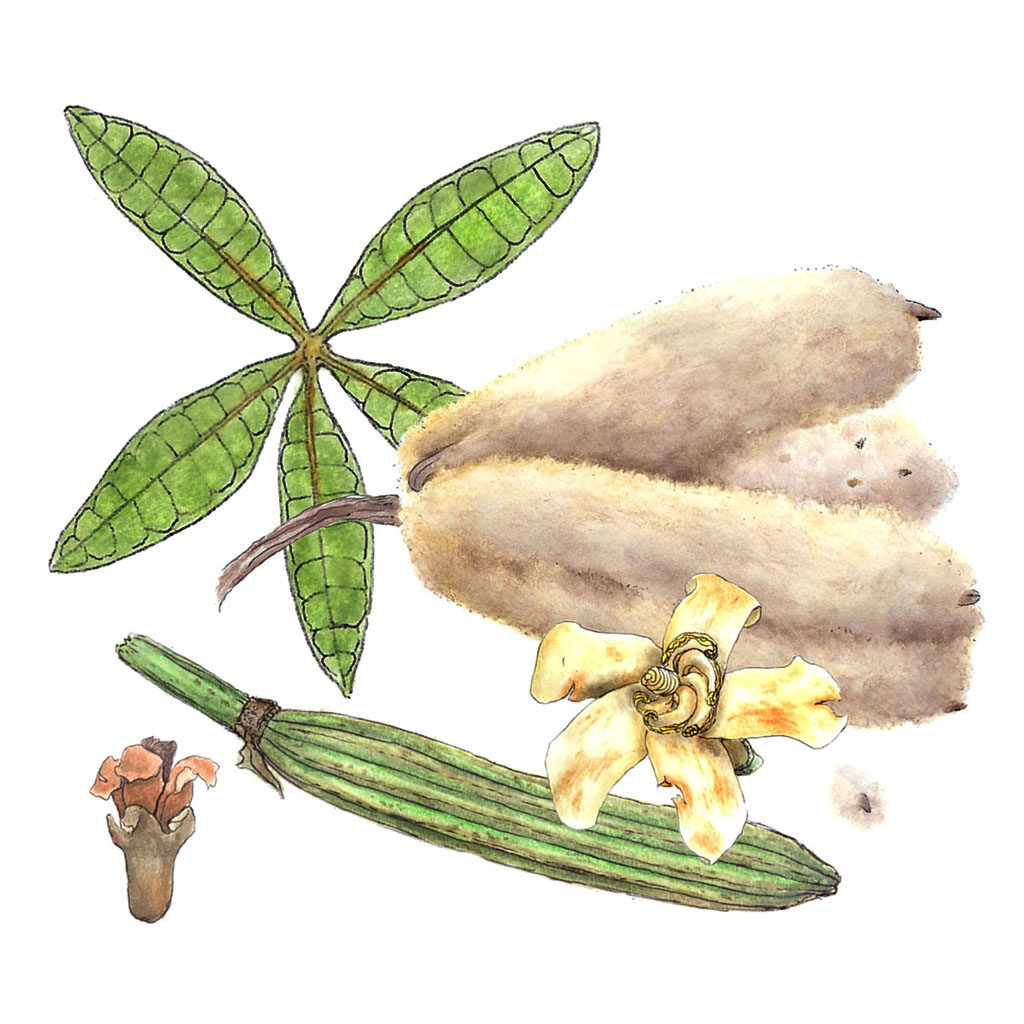Ceiba Tree, Kapok Tree

The Ceiba (SAY-buh) tree was the most sacred Tree of Life in ancient Mayan culture, with roots going down into the Mayan Underground, the trunk representing the Middle, or visible, World of earth, and the canopy symbolized the Upper World of heaven. The conical spines on the trunk and branches, as much as an inch long, often showed up in Mayan art and sculpture, although not all ceibas produce spines.
The buttressed ceiba tree can grow to a huge size, up to 250′, with an 8′ – 9′ trunk diameter. The buttresses on some giant specimens reach 50′ up the sides of the huge trunks. The crown can be nearly 200′ across. These are truly magnificent trees – fully fit to represent the Universe in any culture. More here.
Conical spines may also be found on other tree species, so the most characteristic part of the tree is the fur-filled pods. Ripened and fallen to the ground, they resemble large, tan rats. The cottony fuzz, often called kapok, was harvested to stuff mattresses, pillows, toys and life preservers before polyester stuffing came into use. The 5 to 9-fingered palmate leaves and fleshy ivory flowers with woody stems (pollinated by bats) are also good identifying features. There’s a ceiba tree inside the entrance of BIB.
Adding to its outstanding stature, it is also considered a medicinal plant. You can boil up its bark to use as a diuretic, an aphrodisiac, a headache treatment, and reportedly, to treat type II diabetes.